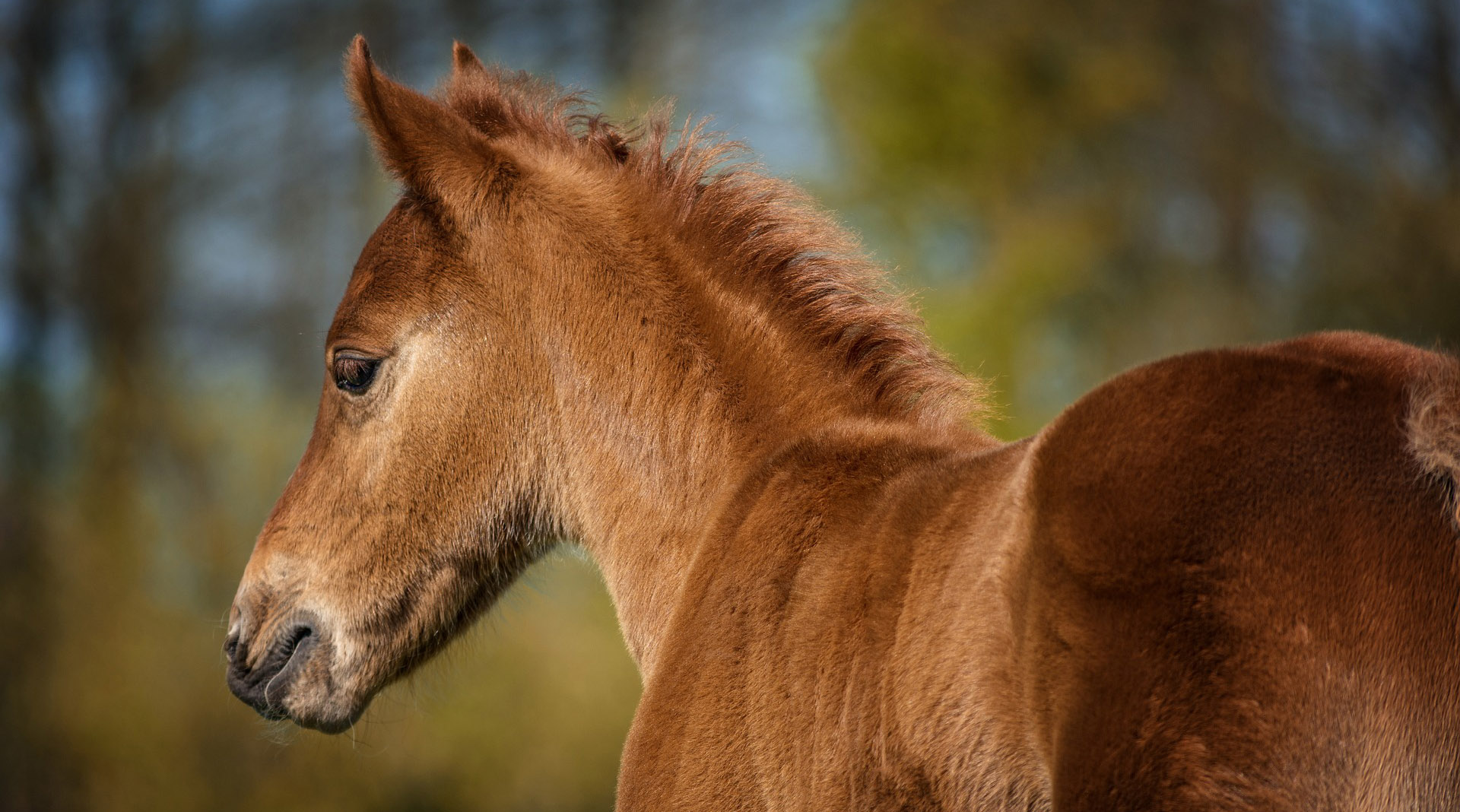Mathilde Leclère, DMV, PhD. Dipl. ACVIM et Marion Allano, DMV, Dipl. ACVIM.
The syndrome of dysmaturity and hypothyroidism associated with iodine deficiency during gestation was observed in Quebec and Ontario in the summer of 2022. This syndrome is well known in Western Canada but is rare in Quebec. Iodine deficiency in mares seems to be associated with an increase in nitrates in forages during unfavorable climatic conditions. Nitrates interfere with the absorption of iodine and other microelements.
Clinical signs include: myoarthroskeletal malformations (incomplete ossification, flexural deformities, rupture of the extensor tendons, inability to stand) with or without goiter, prolonged gestation, dysmaturity, prognathism, abnormal umbilicus (large, hernia), and infections. The following article gives more details, but all signs are not necessarily present in the same foal. Recognition of the condition is therefore difficult when only one foal is affected.
Since there is a lot of variation in thyroid hormones and iodine levels in newborns, the diagnosis is based on clinical signs and serum iodine levels in mares. This can be done in Guelph (Guelph Vet Animal Health Lab, “iodine” short code “iod”, specify serum when submitting) or in Michigan. Foals are also often deficient in selenium, copper and zinc.
The prognosis for foals with poor ossification and who are non-ambulatory is poor. As a preventive measure, mares should receive iodine during gestation and lactation (1 to 3 mg per day for a 500-kg mare). Two tablespoons (30 g) of iodized salt at 150 mg/kg provides 4.5 mg, ex: Sifto Canadian Stockman). They should also receive minerals with copper and zinc, and a selenium supplement. Selenium deficient foals should also be supplemented. Because the syndrome is rare here, the iodine absorption is variable, and an iodine overdose can cause goiter, it would be safer to test mares before and during supplementation to avoid improper supplementation.
In order to assess the extent of the problem, you can report suspected cases to Mathilde Leclère or Marion Allano.
The CHUV would like to thank the owners and referring veterinarians, as well as Ms. Michelle Tremblay, agronomist, who helped identify the condition, and our colleagues at the University of Saskatoon for their advice.
Mathilde Leclère, DVM, PhD, Dipl. ACVIM
Associate Professor of Equine Internal Medicine
Medical Chief of the Equine Hospital
Université de Montréal

